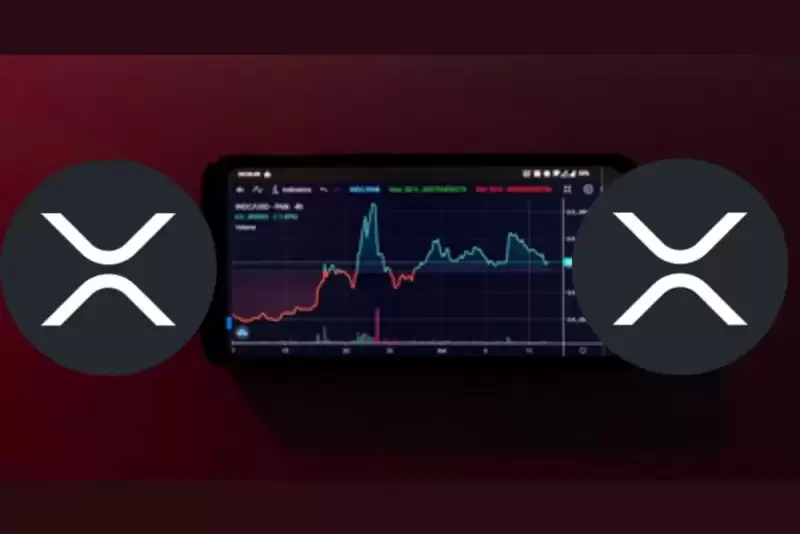 |
|
 |
|
 |
|
 |
|
 |
|
 |
|
 |
|
 |
|
 |
|
 |
|
 |
|
 |
|
 |
|
 |
|
 |
|
Cryptocurrency News Articles
Binance Delists Tether (USDT) and Other Non-compliant Stablecoins Ahead of MiCA Implementation
Apr 02, 2025 at 08:10 pm
The European cryptocurrency market is bracing for a seismic shift as Binance, one of the world's largest exchanges, has announced its decision to delist Tether (USDT)
Europe's cryptocurrency market is bracing for a seismic shift as Binance, one of the world’s largest exchanges, has announced its decision to delist Tether (USDT) and other stablecoins deemed non-compliant with the upcoming European Markets in Crypto-Assets (MiCA) legislation. This move, which will take effect on March 31, 2025, marks a pivotal moment in the regulatory evolution of the crypto industry, signaling a new era of stringent compliance and heightened transparency.
The implications of Binance’s decision extend far beyond the exchange itself, potentially reshaping the entire European crypto landscape and setting a precedent for global regulatory standards.
The European Markets in Crypto-Assets (MiCA) regulation, set to come into force on March 31, 2025, represents a watershed moment for the cryptocurrency industry. Designed to foster greater consumer protection and market integrity, MiCA imposes stringent requirements on stablecoin issuers, including licensing obligations, reserve transparency, and robust operational standards.
The regulation’s overarching goal is to mitigate the risks associated with stablecoins, which have become increasingly integral to the crypto ecosystem. By ensuring that stablecoins are backed by adequate reserves and operate with transparency, MiCA aims to safeguard investors and promote financial stability.
However, the stringent requirements of MiCA have presented challenges for some stablecoin issuers, notably Tether, the issuer of USDT. The company’s unwillingness to fully comply with the new regulations has led to Binance’s decision to delist USDT and other non-compliant stablecoins from its spot trading platform.
Binance’s decision to delist USDT and other non-compliant stablecoins, such as TrueUSD (TUSD), Dai (DAI), and Pax Dollar (USDP), highlights the exchange’s commitment to complying with MiCA. The delisting, which will take effect on March 31, 2025, will remove these stablecoins from spot trading within the European Economic Area (EEA).
However, Binance has clarified that users in the EEA will still be able to custody, withdraw, and trade these tokens through perpetual contracts. This provision enables users to maintain their existing holdings and engage in derivative trading, despite the limitations on spot trading.
Moreover, Binance is offering an incentive for users to transition to MiCA-compliant alternatives, such as Circle’s USD Coin (USDC), with zero-fee trading for these tokens beginning in March 2025. This move aims to facilitate a smooth transition for users and encourage the adoption of compliant stablecoins.
Following Binance’s lead, other exchanges are also taking steps to align their operations with MiCA regulations. Kraken has delisted USDT and transitioned to a “sale-only” basis, allowing users to sell their USDT but not purchase new ones. Similarly, Crypto.com is shutting down its defi products and focusing on MiCA-compliant offerings.
The coordinated response from major exchanges underscores the significant impact of MiCA and the industry’s recognition of the need for regulatory compliance. The delisting of USDT and other non-compliant stablecoins signals a paradigm shift in the European crypto market, with exchanges prioritizing regulatory adherence over short-term trading volumes.
The implications of the delisting of USDT from major European exchanges are far-reaching for the stablecoin market.
The European Union's new crypto regulations, known as Markets in Crypto-Assets (MiCA), are set to come into force on March 31, 2025. These regulations are designed to foster greater consumer protection, market integrity, and stability in the rapidly evolving cryptocurrency industry.
The European Securities and Markets Authority (ESMA) is playing a pivotal role in shaping the MiCA regulations and supervising their implementation. ESMA's focus is on ensuring that crypto activities are performed in a transparent and compliant manner, with the best interests of consumers and the financial system in mind.
ESMA's stance on stablecoin custody and trading has been a subject of attention. According to ESMA's interpretation of MiCA, firms can continue providing custody services for non-compliant stablecoins. However, ESMA has made it clear that any trading activity in such tokens should cease after March 31, 2025.
ESMA's perspective is crucial for understanding how MiCA will reshape the European crypto landscape. The regulatory body's emphasis on consumer protection and investor safeguarding is evident in its interpretation of the new legislation.
The European Union's proactive approach to regulating stablecoins through MiCA is setting a global precedent. As the world's largest single economic and political entity, the EU's actions are closely monitored by other jurisdictions, which may adopt similar regulatory frameworks.
The increasing regulatory scrutiny of stablecoins is also prompting a discussion on the need for global regulatory harmonization. A coordinated approach to regulating stablecoins can help mitigate risks, promote financial stability, and foster investor confidence.
As the crypto industry continues to evolve, the implications of Mi
Disclaimer:info@kdj.com
The information provided is not trading advice. kdj.com does not assume any responsibility for any investments made based on the information provided in this article. Cryptocurrencies are highly volatile and it is highly recommended that you invest with caution after thorough research!
If you believe that the content used on this website infringes your copyright, please contact us immediately (info@kdj.com) and we will delete it promptly.
-

-

-

-

-

-

- Streamr will host a community call on X to unveil new application-layer tools, including StreamrTV
- Apr 24, 2025 at 08:00 am
- Streamr will host a community call on X to unveil new application-layer tools, including StreamrTV, on the Streamr Network. The event will take place on April 24th at 15:00 UTC.
-

-

-





























































